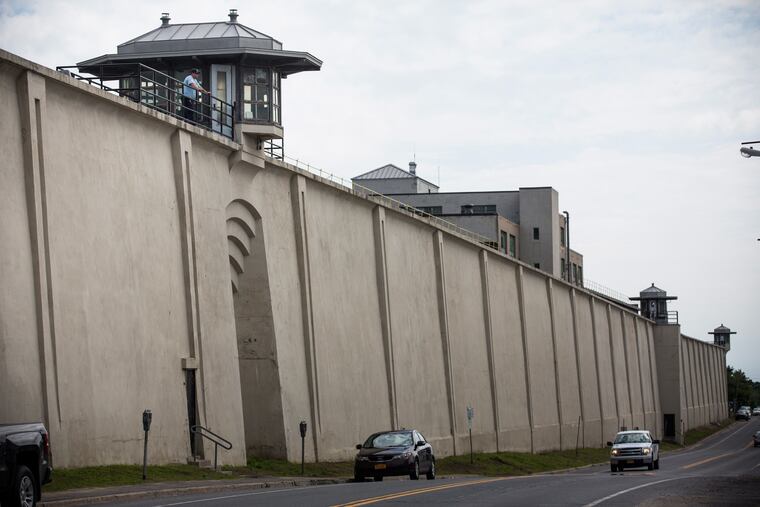Incarceration has always threatened health. COVID-19 just worsened the problem. | Opinion
During the pandemic, jail populations—largely poor people who can’t afford bail—have been some of the hardest hit by the virus.

Paralyzed by a gunshot wound at age 20, Anthony Swain was unable to post a $650,000 bond when he was arrested in 2016 on nonviolent drug possession charges. Four years in a Miami jail awaiting trial is daunting enough for any 43-year old man but for a paraplegic who also suffers from cystic myelomalacia, a painful degenerative disease that affects the nervous and respiratory systems, the experience was akin to being hurled into a petri dish of infirmities.
And then Swain contracted COVID-19.
In crowded unsanitary conditions with minimal wheelchair accessibility, Swain spent weeks in solitary confinement while suffering from COVID-19 and was left sitting in his own feces. The treatment he received was so inhumane that I felt obligated to serve as an expert medical witness in the lawsuit filed on his behalf. If it weren’t for a local campaign organized by Dream Defenders, where I serve as director of health programs, to raise funds for his bail, Anthony likely would have died behind bars.
During the pandemic, jail populations—largely comprised of poor people who can’t afford bail—have been some of the hardest hit by the virus. COVID infection and death rates have been higher among detainees in jail and prisons, most of which lack adequate PPE, medical staff, and space to socially distance. In numerous states, incarcerated people have faced such terrible living conditions, including being denied medical treatment, that they went on hunger strikes, including at least two this year in New Jersey. In Texas as of mid-November, people awaiting trial accounted for 80% of all COVID deaths in county jails.
Jails and prisons have long proved a threat to public health. Even before the pandemic, every year of detention decreased life expectancy by about two years. High rates of infectious diseases like Hepatitis C, HIV, and tuberculosis were documented well before COVID-19 arrived. On any given day, almost a half a million people sit behind bars for nonviolent drug offenses, some serving life, including for drugs that states are now scrambling to sell for tax revenues. Meanwhile, thousands of migrants have been separated from their families at the border and warehoused in federal detention centers, where detainees have widely reported that sexual abuse and medical neglect of women and children was already happening.
Amid the pandemic, an OBGYN allegedly performed hysterectomies on women held in a Georgia Immigrations and Customers Enforcement detention center without their consent, catalyzing a class action lawsuit involving 40 women. ICE has continued to separate children from their parents, adding to hundreds of families already separated — a move taken from the Chattel Slavery playbook. All the while states like California, New York, and Arizona have relied on prisoners to continue working for cents an hour in precarious conditions.
It is obvious that corrections officials nationwide continued business as usual even after prisons and jails were identified as “superspreaders” for a highly communicable disease.
And Blacks and Latinos continue to bear the heaviest burden. Declared the “The New Jim Crow” by Michelle Alexander, America’s lock-em-up approach to crime illustrates how the U.S. consistently and grossly violates human rights and underscores why private profits and public health don’t mix. As many jails were forced to hold inmates who pre-pandemic would have been transferred to prison, we’ve seen uncontrolled coronavirus outbreaks seed their way back into communities. While some municipalities across the nation have scrambled to release people who couldn’t afford cash bail (a system that activists have long called a punishment for being poor), the virus had already been infecting people locked up at a rate almost quadruple that of the community.
In Miami, the incumbent state attorney of nearly 30 years received a pat on the back for releasing a small fraction of inmates, while in San Francisco local government reduced the jail population by nearly 40%. Local doctors are even joining the call to decrease inmate population. This proves that we can safely free people from cages while reducing violent crime, and I find some hope in that.
With a president-elect who has — up until recently — proudly proclaimed himself the architect of the system of mass incarceration, we find ourselves in a unique position to dismantle it. I stand in solidarity with all advocates and activists calling on the Biden administration to reduce the number of people in prison and going to prison on day one while urging state legislatures to follow suit. Governors of states like MI, LA and OK with the country’s highest incarceration rates must take this call to action seriously and put the public health of their constituents first.
As a Black physician directly impacted by mass incarceration, I believe prison funding — much like police funding — should be diverted to pay for alternative solutions to public safety. Medical professionals must move beyond “do no harm” and actively recommit to caring for people by refusing to participate in criminalization. We should not advance state punishment under the guise of providing care or doing research. We should be staunch whistleblowers and active fighters against injustice wherever it stands, especially if that injustice poses grave public health implications to the communities we serve.
Armen Henderson is an assistant professor of medicine at University of Miami, Miller School of Medicine and founder of the Dade County Street Response Disaster Relief Team. This article was supported by the Economic Hardship Reporting Project.
» READ MORE: Pennsylvania prisons’ unreliable COVID data hides the true extent of the crisis | Editorial
» READ MORE: Inside Pennsylvania’s prison outbreak, where catching COVID-19 can land you in ‘the hole’